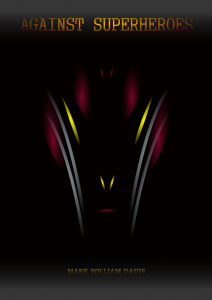 As I watched over the Nepalese countryside populated by small hilltop compounds, the irregular terraces of rice paddies reflected the clouds in their muddy mirrors. I had taken on a certain quality of stasis here, frozen above a jungle mountain in an envelope of mist.
As I watched over the Nepalese countryside populated by small hilltop compounds, the irregular terraces of rice paddies reflected the clouds in their muddy mirrors. I had taken on a certain quality of stasis here, frozen above a jungle mountain in an envelope of mist.
I took to trying to mine my memories, to unravel these chains of semantic and temporal associations that reached back through the gray wall of my origins. It was maddeningly difficult, shifting through trapezoids of connections shot through with scientific and technical associations, and with the addition of the perspectives of the people who I had possessed, but I achieved some clarity with diligence and strain. When my mind wandered out to those rice paddies and the tiny shifting figures tending to them, or to the small vans that struggled along the high, sloppy roads, or when the focus moved to the dancing energies of the sky and moisture, I learned to return to this rummaging by counting slowly by threes or by prime numbers, up and down, the necessity of the mental acrobatics pushing the imagery back into a halo around the mathematical gears until they were finally erased, and I returned to the signals of my past.
There I was again, in graduate school, the poetic inflections of the Orphic hymns impressing me until I began writing my own inspired variations, like a composer copying and reordering works by Baroque masters. This theme of divinity, from the Vedas through to the Native American myths, from the Slavic translations to the Babylonian Baals, was always the encompassing and central element of the written and oral traditions.
And all these texts reflected a time when the human mind was only connected to one town, almost always to agriculture, subject to the whims of the seasons and the terror of sickness, and then often forced into violence by the more powerful or by passions that arose without control.… Read the rest